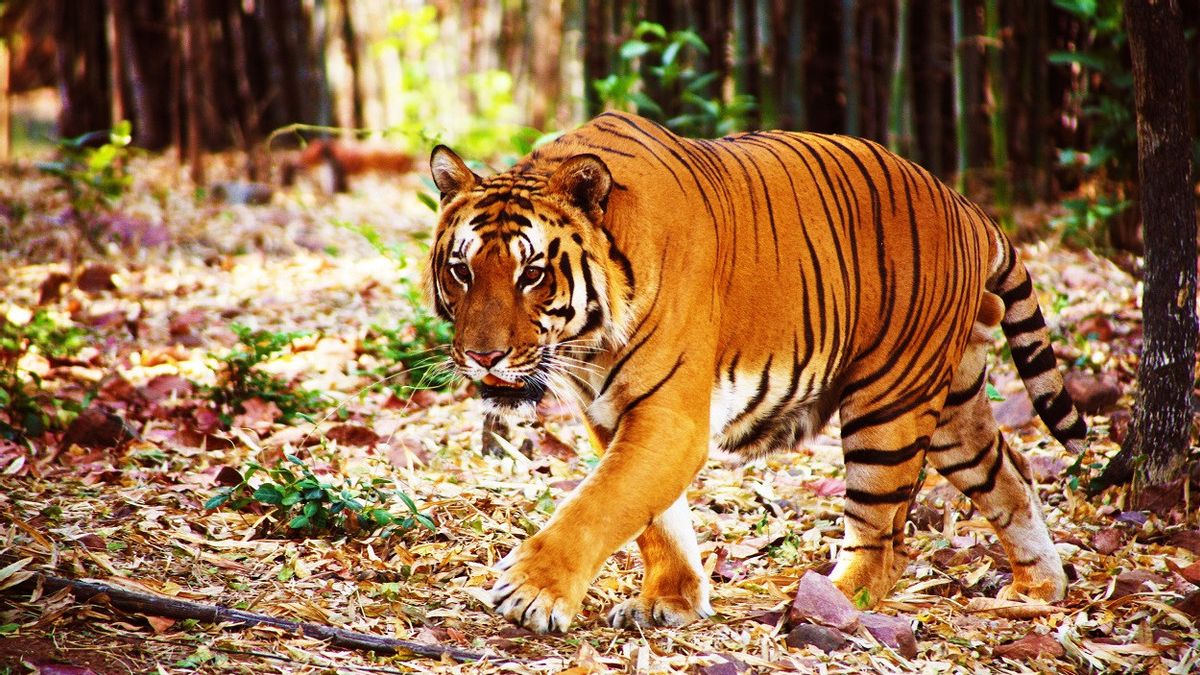JAKARTA - The number of tigers throughout Asia had reached 100,000 in the early 20th century, before the species fell to the brink of extinction.
In 2006, their population in India, home to most of the world's remaining wild tigers, hit record lows, with 1,411 individuals remaining.
However, conservation efforts over the decades seem to have paid off. The Indian tiger has more than doubled since, reaching 3,167 years ago, according to a census of the latest tiger released last month.
That's about 70 percent of the world's wild tiger population, which reaches about 4,500, according to the World Wildlife Fund (WWF).
The rise of an Indian tiger represents victory for conservationists, and a glimmer of hope for other countries struggling to increase the number of wildlife.
The report was released in conjunction with celebrations to commemorate the 50th anniversary of the Tiger Project, a government conservation program launched in 1973.
"We have a history of thousands of years related to tigers... Tigers are considered our brothers in many ethnic groups," Prime Minister Narendra Modi said in a speech, quoted by CNN on May 1.
"A better future for mankind is only possible, when our environment is protected and our biodiversity continues to grow."
Long before, the number of tigers began to decline drastically in the 1940s, when the human population soared. The expansion of agriculture, deforestation of forests and infrastructure has broken down tiger habitats, according to WWF, given that tigers are solitary animals that require large areas to roam and hunt.
Currently, tigers only exist at 7 percent of the land they used to live in, according to WWF.
This dwindling space means an increase in human-religious conflict, with various incidents in recent decades of tigers attacking humans and entering the village for food.
And they are not alone, because India's endangered elephants also often roam on agricultural land and eat crops.
Although environmental degradation is a problem facing countries around the world, the Indian population boom poses a unique challenge. In 1971, the country had a population of 547 million people. Now, the number has reached 1.4 billion, and will follow China to become the most populous country in the world this year.
Unregulated hunting in 1980 further accelerated the decline in the number of tigers. Tigers are being hunted for sport, status and consumption, with bones and other parts often used in traditional Chinese medicine.
India officially banned tiger hunting in 1972, but the hunt remains a major threat, with illegal hunting being blamed for the total extinction of tigers within India's nature reserve in 2005.
Efforts to reverse the trend have led India to develop 53 tiger heritages covering nearly 75,800 square kilometers (about 7.5 million hectares), an increase from just nine natural heritages at the start of the Tiger Project.
Authorities have relocated and paid the entire village to provide space for tigers, and created a wild animal corridor to connect their fragmented habitat.
In addition, the Government has also invested in technologies such as drones, camera traps, software systems to track the population, movement and behavior of tigers.
WWF warns, there are many challenges ahead. The deteriorating climate crisis poses problems for vulnerable habitats. Many tiger asylums and protected areas are "small islands in the vast oceans of ecologically unsustainable land use," with human activity entering the tiger environment. And poaching continues despite strict laws.
However, the return of the tiger population was quite encouraging, with India starting to share its conservation practices with other countries where the number of tigers declined.
SEE ALSO:
In recent years, New Delhi has signed a bilateral agreement and launched initiatives including conservation workshops with Thailand, Cambodia, Malaysia, Bangladesh and Bhutan.
In addition to tigers, India also rejoiced at welcoming its first birth in March, more than 70 years after the great cat was officially declared extinct in the country.
His children were born to two rehabilitatedmen brought from Namibia to India, as part of the government's plan to accommodate 50 individuals over the next five years.
The English, Chinese, Japanese, Arabic, and French versions are automatically generated by the AI. So there may still be inaccuracies in translating, please always see Indonesian as our main language. (system supported by DigitalSiber.id)


















